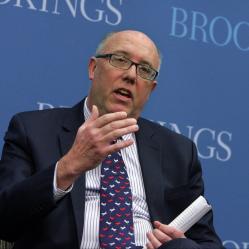INTRODUCTION
I visited India in February 2008 with a Brookings Study Tour, traveling for two weeks in Mumbai (Bombay), Bangalore, Udaipur, and New Delhi. The issue of nuclear proliferation in “West Asia,” as Indians call the Middle East, came up with business leaders, government officials, and members of the media with whom met. In addition, around the time was in India, the U.S.-Indian civil nuclear deal (announced in July 2005 and aimed at strengthening U.S.-energy cooperation and providing U.S. assistance to India’s civilian nuclear energy program), stalled due to the opposition of communist members of the governing coalition. This provided a natural introduction for discussing the danger of further nuclear proliferation in the region, specifically in Iran.
Some in the United States have strongly criticized India for maintaining strong economic relations with Iran and for having exchanges of low-level military delegations (largely limited to unimportant navigation exercises and port visits by their navies). U.S. disapproval is also based on the fact that in 2003 and India signed the “New Delhi Declaration” that sought to improve relations, especially on energy issues, and recently, there has been talk of constructing an ambitious gas pipeline from Iran to India. This has led some in the United States to suggest that the U.S.-Indian civilian nuclear deal should be held hostage to a break in Indo-Iranian relations.



